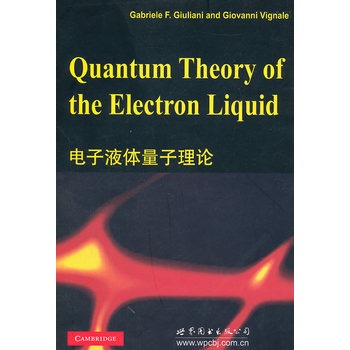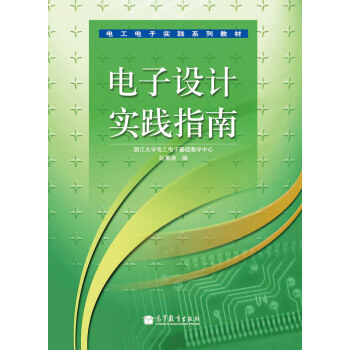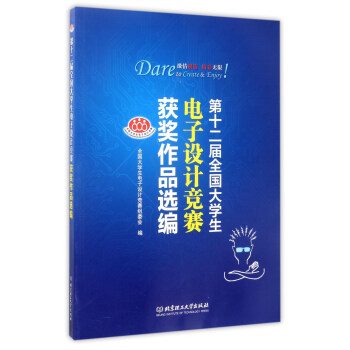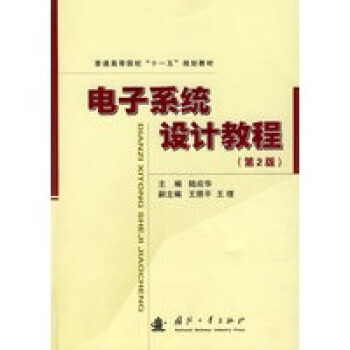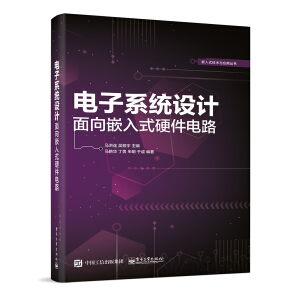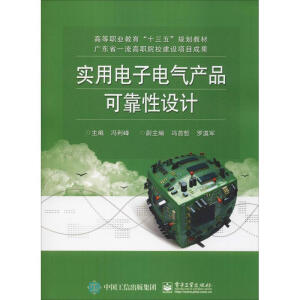The electron liquid paradigm is at the basisof most of our current understanding of the physical properties ofelectronic systems. Quite remarkably, the latter are nowadays atthe intersection of the most exciting areas of science: materialsscience, quantum chem- istry, nano-electronics, biology, andquantum computation. Accordingly, its importance can hardly beoverestimated. The field is particularly attractive not only forthe simplicity of its classic formulation, but also because, by itsvery nature, it is still possible for individual researchers, armedwith thoughtfulness and dedication, and surrounded by a small groupof collaborators, to make deep contributions, in the best traditionof "small science".
preface
1 introduction to the electron liquid
1.1 a tale of many electrons
1.2 where the electrons roam: physical realizations of the electronliquid
1.2.1 three dimensions
1.2.2 two dimensions
1.2.3 one dimension
1.3 the model hamiitonian
1.3.1 jeilium model
1.3.2 coulomb interaction regularization
1.3.3 the electronic density as the fundamental parameter
1.4 second quantization
1.4.1 fock space and the occupation number representation
1.4.2 representation of observables
1.4.3 construction of the second-quantized hamiltonian
preface
1 introduction to the electron liquid
1.1 a tale of many electrons
1.2 where the electrons roam: physical realizations of the electronliquid
1.2.1 three dimensions
1.2.2 two dimensions
1.2.3 one dimension
1.3 the model hamiitonian
1.3.1 jeilium model
1.3.2 coulomb interaction regularization
1.3.3 the electronic density as the fundamental parameter
1.4 second quantization
1.4.1 fock space and the occupation number representation
1.4.2 representation of observables
1.4.3 construction of the second-quantized hamiltonian
1.5 the weak coupling regime
1.5.1 the noninteracting electron gas
1.5.2 noninteracting spin polarized states
1.5.3 the exchange energy
1.5.4 exchange energy in spin polarized states
1.5.5 exchange and the pair correlation function
1.5.6 all-orders perturbation theory: the rpa
1.6 the wigner crystal
1.6.1 classical electrostatic energy
1.6.2 zero-point motion
1.7 phase diagram of the electron liquid
1.7.1 the quantum monte carlo approach
1.7.2 the ground-state energy
1.7.3 experimental observation of the electron gas phases
1.7.4 exotic phases of the electron liquid
1.8 equilibrium properties of the electron liquid
1.8.1 pressure, compressibility, and spin susceptibility
1.8.2 the virial theorem
1.8.3 the ground-state energy theorem
exercises
2 the hartree--fock approximation
2.1 introduction
2.2 formulation of the hartree-fock theory
2.2.1 the hartree-fock effective hamiltonian
2.2.2 the hartree-fock equations
2.2.3 ground-state and excitation energies
2.2.4 two stability theorems and the coulomb gap
2.3 hartree-fock factorization and mean field theory
2.4 application to the uniform electron gas
2.4.1 the exchange energy
2.4.2 polarized versus unpolarized states
2.4.3 compressibility and spin susceptibility
2.5 stability of hartree--fock states
2.5.1 basic definitions: local versus global stability
2.5.2 local stability theory
2.5.3 local and global stability for a uniformly polarized electrongas
2.6 spin density wave and charge density wave hartree-fockstates
2.6.1 hartree-fock theory of spiral spin density waves
2.6.2 spin density wave instability with contact interactions inone dimension
2.6.3 proof of overhauser's instability theorem
2.7 bcs non number-conserving mean field theory
2.8 local approximations to the exchange
2.8.1 slater's local exchange potential
2.8.2 the optimized effective potential
2.9 real-world hartree-fock systems
exercises
3 linear response theory
3.1 introduction
3.2 general theory of linear response
3.2.1 response functions
3.2.2 periodic perturbations
3.2.3 exact eigenstates and spectral representations
3.2.4 symmetry and reciprocity relations
3.2.5 origin of dissipation
3.2.6 time-dependent correlations and the fiuctuation--dissipationtheorem
3.2.7 analytic properties and collective modes
3.2.8 sum rules.
3.2.9 the stiffness theorem
3.2.10 bogoliubov inequality
3.2.11 adiabatic versus isothermal response
3.3 density response
3.3.1 the density--density response function
3.3.2 the density structure factor
3.3.3 high-frequency behavior and sum rules
3.3.4 the compressibility sum rule
3.3.5 total energy and density response
3.4 current response
3.4.1 the current--current response function
3.4.2 gauge invariance
3.4.3 the orbital magnetic susceptibility
3.4.4 electrical conductivity: conductors versus insulators
3.4.5 the third moment sum rule
3.5 spin response
3.5.1 density and longitudinal spin response
3.5.2 high-frequency expansion
3.5.3 transverse spin response
exercises
4 linear response of independent electrons
4.1 introduction
4.2 linear response formalism for non-interacting electrons
4.3 density and spin response functions
4.4 the lindhard function
4.4.1 the static limit
4.4.2 the electron-hole continuum
4.4.3 the nature of the singularity at small q and to
4.4.4 the lindhard function at finite temperature
4.5 transverse current response and landau diamagnetism
4.6 elementary theory of impurity effects
4.6.1 derivation of the drude conductivity
4.6.2 the density-density response function in the presence ofimpurities
4.6.3 the diffusion pole
4.7 mean field theory of linear response
exercises
5 linear response of an interacting electron liquid
5.1 introduction and guide to the chapter
5.2 screened potential and dielectric function
5.2.1 the scalar dielectric function
5.2.2 proper versus full density response and the compressibilitysum rule
5.2.3 compressibility from capacitance
5.3 the random phase approximation
5.3,1 the rpa as time-dependent hartree theory
5.3.2 static screening
5.3.3 plasmons
5.3.4 the electron-hole continuum in rpa
5.3.5 the static structure factor and the pair correlationfunction
5.3.6 the rpa ground-state energy
5.3.7 critique of the rpa
5.4 the many-body local field factors
5.4.1 local field factors and response functions
5.4.2 many-body enhancement of the compressibility and the spinsusceptibility
5.4.3 static response and friedel oscillations
5.4.4 the stls scheme
5.4.5 multicomponent and spin-polarized systems
5.4.6 current and transverse spin response
5.5 effective interactions in the electron liquid
5.5.1 test charge--test charge interaction
5.5.2 electron-test charge interaction
5.5.3 electron-electron interaction
5.6 exact properties of the many-body local field factors
5.6.1 wave vector dependence
5.6.2 frequency dependence
5.7 theories of the dynamical local field factor
5.7.1 the time-dependent hartree-fock approximation
5.7.2 first order perturbation theory and beyond
5.7.3 the mode-decoupling approximation
5.8 calculation of observable properties
5.8.1 plasmon dispersion and damping
5.8.2 dynamical structure factor
5.9 generalized elasticity theory
5.9.1 elasticity and hydrodynamics
5.9.2 visco-elastic constants of the electron liquid
5.9.3 spin diffusion
exercises
6 the perturbative calculation of linear responsefunctions
6.1 introduction
6.2 zero-temperature formalism
6.2.1 time-ordered correlation function
6.2.2 the adiabatic connection
6.2.3 the non-interacting green's function
6.2.4 diagrammatic perturbation theory
6.2.5 fourier transformation
6.2.6 translationa!iy invariant systems
6.2.7 diagrammatic calculation of the lindhard function
6.2.8 first-order correction to the density-density responsefunction
6.3 integral equations in diagrammatic perturbation theory
6.3.1 proper response function and screened interaction
6.3.2 green's function and self-energy
6.3.3 skeleton diagrams
6.3.4 irreducible interactions
6.3.5 self-consistent equations
6.3.6 two-body effective interaction: the local approximation
6.3..7 extension to broken symmetry states
6.4 perturbation theory at finite temperature
exercises
7 density functional theory
7.1 introduction
7.2 ground-state formalism
7.2.1 the variational principle for the density
7.2.2 the hohenberg-kohn theorem
7.2.3 the kohn--sham equation
7.2.4 meaning of the kohn-sham eigenvalues
7.2.5 the exchange-correlation energy functional
7.2.6 exact properties of energy functionals
7.2.7 systems with variable particle number
7.2.8 derivative discontinuities and the band gap problem
7.2.9 generalized density functional theories
7.3 approximate functionais
7.3.1 the thomas-fermi approximation
7.3.2 the local density approximation for the exchange-correlationpotential
7.3.3 the gradient expansion
7.3.4 generalized gradient approximation
7.3.5 van der waals functionals
7.4 current density functional theory
7.4.1 the vorticity variable
7.4.2 the kohn-sham equation
7.4.3 magnetic screening
7.4.4 the local density approximation
7.5 time-dependent density functional theory
7.5.1 the runge--gross theorem
7.5.2 the time-dependent kohn-sham equation
7.5.3 adiabatic approximation
7.5.4 frequency-dependent linear response
7.6 the calculation of excitation energies
7.6.1 finite systems
7.6.2 infinite systems
7.7 reason for the success of the adiabatic lda
7.8 beyond the adiabatic approximation
7.8.1 the zero-force theorem
7.8.2 the "ultra-nonlocality" problem
7.9 current density functional theory and generalizedhydrodynamics
7.9.1 the xc vector potential in a homogeneous electronliquid
7.9.2 the exchange-correlation field in the inhomogeneous electronliquid
7.9.3 the polarizability of insulators
7.9.4 spin current density functional theory
7.9.5 linewidth of collective excitations
7.9.6 nonlinear extensions
exercises
8 the normal fermi liquid
8.1 introduction and overview of the chapter
8.2 the landau fermi liquid
8.3 macroscopic theory of fermi liquids
8.3.1 the landau energy functional
8.3.2 the heat capacity
8.3.3 the landau fermi liquid parameters
8.3.4 the compressibility
8.3.5 the paramagnetic spin response
8.3.6 the effective mass
8.3.7 the effects of the electron-phonon coupling
8.3.8 measuring m*, k, g* and xs
8.3.9 the kinetic equation
8.3.10 the shear modulus
8.4 simple theory of the quasiparticle lifetime
8.4.1 general formulas
8.4.2 three-dimensional electron gas
8.4.3 two-dimensional electron gas
8.4.4 exchange processes
8.5 microscopic underpinning of the landau theory
8.5.1 the spectral function
8.5.2 the momentum occupation number
8.5.3 quasiparticle energy, renormalization constant, and effectivemass
8.5.4 luttinger's theorem
8.5.5 the landau energy functional
8.6 the renormalized hamiitonian approach
8.6.1 separation of slow and fast degrees of freedom
8.6.2 elimination of the fast degrees of freedom
8.6.3 the quasiparticle hamiltonian
8.6.4 the quasiparticle energy
8.6.5 physical significance of the renormalized hamiltonian
8.7 approximate calculations of the self-energy
8.7.1 the gw approximation
8.7.2 diagrammatic derivation of the generalized gwseif-energy
8.8 calculation of quasiparticle properties
8.9 superconductivity without phonons?
8.10 the disordered electron liquid
8.10.1 the quasiparticle lifetime
8.10.2 the density of states
8.10,3 coulomb lifetimes and weak localization in two-dimensionalmetals
exercises
9 electrons in one dimension and the luttinger liquid
9.1 non-fermi liquid behavior
9.2 the luttinger model
9.3 the anomalous commutator
9.4 introducing the bosons
9.5 solution of the luttinger model
9.5.1 exact diagonalization
9.5.2 physical properties
9.6 bosonization of the fermions
9.6.1 construction of the fermion fields
9.6.2 commutation relations
9.6.3 construction of observables
9.7 the green's function
9.7.1 analytical formulation
9.7.2 evaluation of the averages
9.7.3 non-interacting green's function
9.7.4 asymptotic behavior
9.8 the spectral function
9.9 the momentum occupation number
9.10 density response to a short-range impurity
9.1 ! the conductance of a luttinger liquid
9.12 spin-charge separation
9.13 long-range interactions
exercises
10 the two-dimensional electron liquid at high magneticfield
10.1 introduction and overview
10.2 one-electron states in a magnetic field
10.2.1 energy spectrum
10.2.2 one-electron wave functions
10.2.3 fock-darwin levels
10.2.4 lowest landau level
10.2.5 coherent states
10.2.6 effect of an electric field
10.2.7 slowly varying potentials and edge states
10.3 the integral quantum hall effect
10.3.1 phenomenology
10.3.2 the "edge state" approach
10.3.3 streda formula
10.3.4 the laughlin argument
10.4 electrons in full landau levels: energetics
10.4.1 noninteracting kinetic energy
10.4.2 density matrix
10.4.3 pair correlation function
10.4.4 exchange energy
10.4.5 the "lindhard" function
10.4.6 static screening
10.4.7 correlation energy - the random phase approximation
10.4.8 fractional filling factors
10.5 exchange-driven transitions in tilted field
10.6 electrons in full landau levels: dynamics
10.6.1 classification of neutral excitations
10.6.2 collective modes
10.6.3 time-dependent hartree-fock theory
10.6.4 kohn's theorem
10.7 electrons in the lowest landau level
10.7.1 one full landau level
10.7.2 two-particle states: haldane's pseudopotentials
10.8 the laughlin wave function
10.8.1 a most elegant educated guess
10.8.2 the classical plasma analogy
10.8.3 structure factor and sum rules
10.8.4 interpolation formula for the energy
10.9 fractionally charged quasiparticles
10.10 the fractional quantum hall effect
10.11 observation of the fractional charge
10.12 incompressibility of the quantum hall liquid
10.13 neutral excitations
10.13.1 the single mode approximation
10.13.2 effective elasticity theory
10.13.3 bosonization
10.14 the spectral function
10.14.1 an exact sum rule
10.14.2 independent boson theory
10.15 chern-simons theory
10.15.1 formulation and mean field theory
10.15.2 electromagnetic response of composite particles
10.16 composite fermions
10.17 the half-fi!led state
10.18 the reality of composite fermions
10.19 wigner crystal and the stripe phase
10.20 edge states and dynamics
10.20.1 sharp edges vs smooth edges
10.20.2 electrostatics of edge channels
10.20.3 collective modes at the edge
10.20.4 the chirai luttinger liquid
10.20.5 tunneling and transport
exercises
appendices
appendix 1 fourier transform of the coulomb interaction in lowdimensional systems
appendix 2 second-quantized representation of some usefuloperators
appendix 3 normal ordering and wick's theorem
appendix 4 the pair correlation function and the structurefactor
appendix 5 calculation of the energy of a wigner crystal via theewaid method
appendix 6 exact lower bound on the ground-state energy of thejellium model
appendix 7 the density--density response function in acrystal
appendix 8 example in which the isothermal and adiabatic responsesdiffer
appendix 9 lattice screening effects on the effectiveelectron-electron interaction
appendix 10 construction of the stls exchange-correlationfield
appendix 11 interpolation formulas for the local fieldfactors
appendix 12 real space-time form of the noninteracting green'sfunction
appendix 13 calculation of the ground-state energy andthermodynamic potential
appendix 14 spectral representation and frequency summations
appendix 15 construction of a complete set of wavefunctions, with agiven density
appendix 16 meaning of the highest occupied kohn-sham eigenvalue inmetals
appendix 17 density functional perturbation theory
appendix 18 density functional theory at finite temperature
appendix 19 completeness of the bosonic basis set for the luttingermodel
appendix 20 proof of the disentanglement iemma
appendix 21 the independent boson theorem
appendix 22 the three-dimensional electron gas at high magneticfield
appendix 23 density matrices in the lowest landau level
appendix 24 projection in the lowest landau level
appendix 25 solution of the independent boson model
references
index


 書(shū)單推薦
書(shū)單推薦 新書(shū)推薦
新書(shū)推薦


